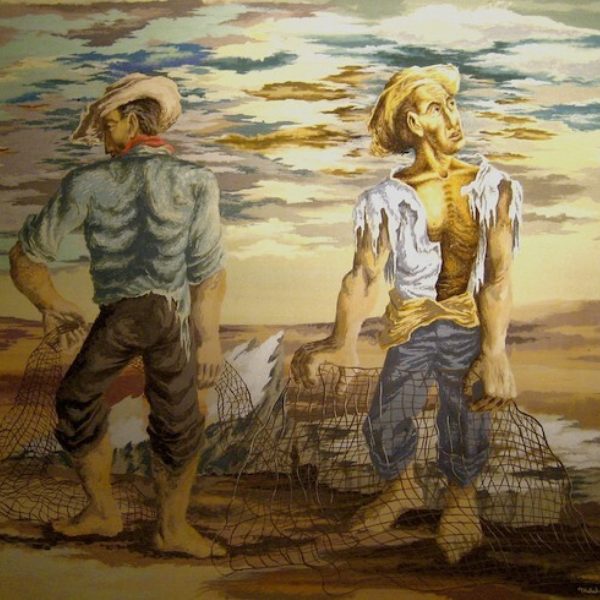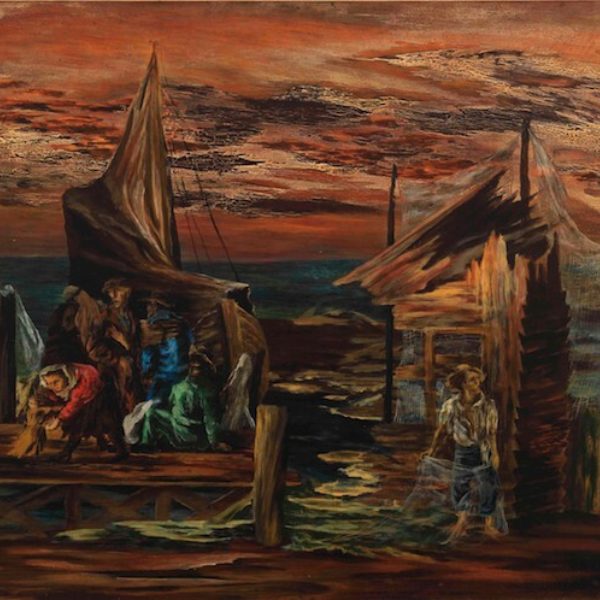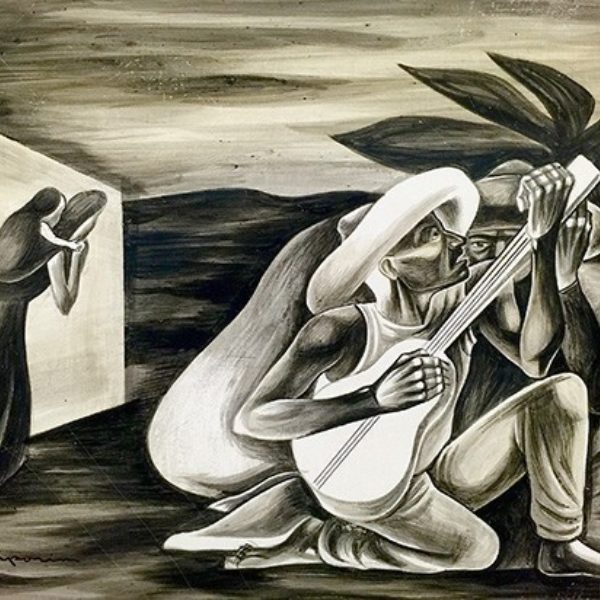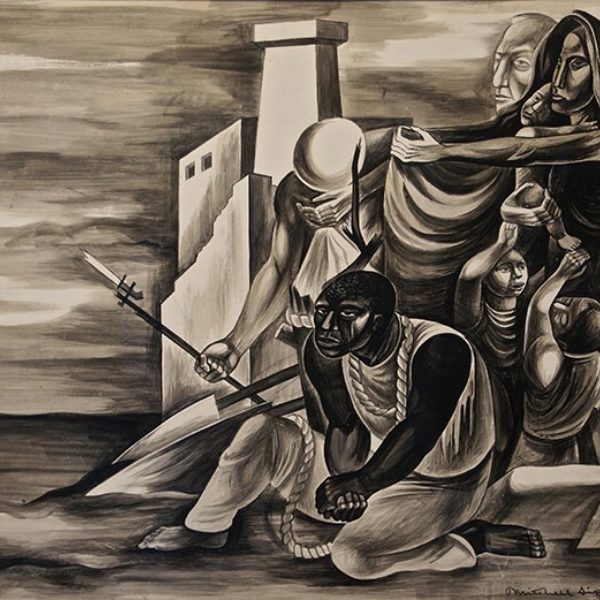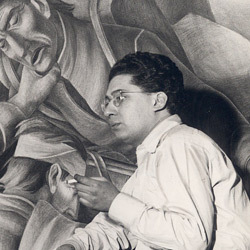
Mitchell Siporin
b. 1910, New York, NY - d. 1976, Newton, MA
Mitchell Siporin’s parents (Chaim, a union organizer, and Genya, a painter) moved to Chicago from New York in 1911. After attending Crane College on Chicago’s West Side, Siporin enrolled at the School of the Art Institute of Chicago (SAIC) and studied privately with Todros Geller. Siporin found success as a freelance illustrator and cartoonist, placing many drawings in magazines such as Esquire, New Masses, and Ringmaster in the early 1930s. The artist’s most important early project, dating from 1934–35, was a series of twenty-five, large pen and ink drawings related to the 1886 Haymarket Riot and its tragic aftermath. A member of the Artists Union and the Chicago John Reed Club, Siporin was a strong social and political activist.
Siporin was appointed to the Illinois Art Project of the WPA in the mid 1930s, and would become one of the most prolific muralists in the Midwest. From 1937 to 1942, he was commissioned to create murals for Bloom Township and Lane Tech High Schools, and worked with Edgar Britton and Edward Millman on major post office murals in Decatur, Illinois and St. Louis, Missouri—the latter being the largest of the Treasury Section’s mural commissions. Siporin’s egg tempera on panel, Let America Be America Again, exemplifies on a small scale the formal values and subjects of the large murals. Reproduced in the July 1936 issue of Esquire Magazine, Let America Be America Again, was also a rare collaboration between artist and poet. Langston Hughes, known as the poet laureate of the Harlem Renaissance, was the most widely recognized black writer in America. A strong communist sympathizer, he agitated on behalf of the Scottsboro boys, traveled to the Soviet Union, and was the figurehead for the Communist front organization, the League of Struggle for Negro Rights. Siporin and Hughes had much in common: politically radical, proudly Midwestern, and passionate admirers of Whitman and Sandburg, they were ideally suited to work together.
Siporin’s painting is executed in a broad range of warm, earth-toned pigments, and portrays a diverse cast of disenfranchised countrymen: white, black, and native-American; male and female; adult and child. The visual anchor of the composition, a kneeling figure painted in rich velvety blacks, also provides the political focus of the work. The egg-tempera technique so adroitly handled by Siporin was undergoing a revival in the United States in the 1930s, partly for its ability to evoke, on easel scale, the matte surfaces of true fresco, which was increasingly called for under the WPA mural projects.
Siporin’s easel paintings of the later 1930s and 1940s, such as those in the Friedman collection, are made up of richly colored, broken brush strokes, and often feature refugees in forbidding landscapes—doubtless a reflection of his experiences as a U.S. Army war artist in Europe from 1942 to 1945. Siporin received a Guggenheim Fellowship in 1945 and founded the Brandeis University Art department in 1951, where he taught until shortly before his death in 1976.
Daniel Schulman
References
Gray, Mary Lackritz. A Guide to Chicago Public Murals. Chicago and London: University of Chicago Press, 2001.
Hughes, Langston. "Let America Be America Again." Academy of American Poets, www.poets.org/viewmedia.php/prmMID/15609.
Rose Art Museum. Mitchell Siporin: A Retrospective. Waltham, MA: Brandeis University, 1976.
Artist image: Photograph of Mitchell Siporin, March 1941, collection of Bernard Friedman.
